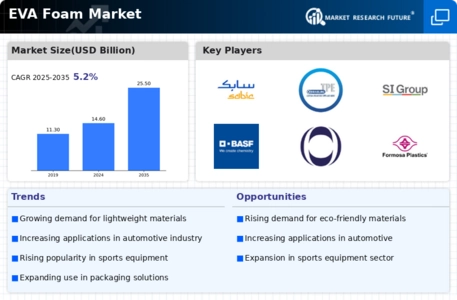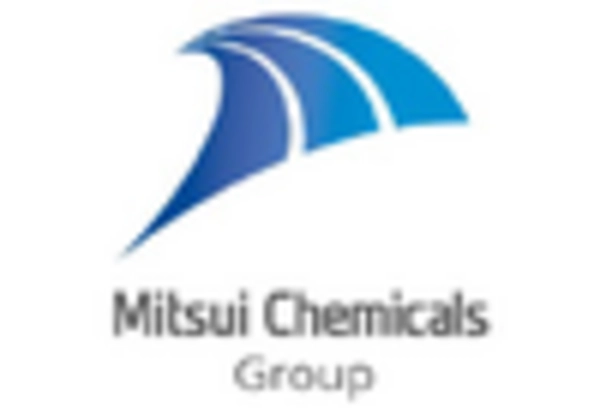Expansion in Packaging Solutions
The EVA Foam Market is experiencing a notable expansion in packaging solutions, driven by the need for protective and lightweight materials. EVA foam's excellent shock absorption and cushioning properties make it an ideal choice for packaging fragile items across various sectors, including electronics and consumer goods. The packaging industry is anticipated to grow significantly, with a projected market size of over 500 billion USD by 2027. This growth presents a substantial opportunity for EVA foam manufacturers to innovate and develop specialized packaging solutions that meet the evolving needs of businesses. As sustainability becomes a focal point, the EVA Foam Market may also explore eco-friendly alternatives to traditional packaging materials, further enhancing its appeal.
Growth in Automotive Applications
The EVA Foam Market is witnessing significant growth due to its increasing applications in the automotive sector. EVA foam is utilized in various automotive components, including interior parts, sound insulation, and cushioning materials. The automotive industry is projected to grow at a compound annual growth rate of around 4% through 2027, which bodes well for EVA foam manufacturers. As automakers strive to enhance vehicle comfort and reduce noise levels, the demand for high-performance materials like EVA foam is expected to rise. This trend indicates a potential for EVA foam suppliers to establish strategic partnerships with automotive manufacturers, thereby expanding their market reach and enhancing product offerings.
Rising Demand in Sports and Leisure
The EVA Foam Market experiences a notable surge in demand driven by the sports and leisure sector. As consumers increasingly prioritize comfort and performance in athletic footwear and equipment, EVA foam's lightweight and cushioning properties become highly sought after. The market for sports footwear alone is projected to reach approximately 100 billion USD by 2026, indicating a robust growth trajectory. This trend is further supported by the rising participation in fitness activities and outdoor sports, which necessitate high-quality materials that enhance user experience. Consequently, manufacturers in the EVA Foam Market are likely to innovate and expand their product lines to cater to this growing consumer base, thereby solidifying their market presence.
Increased Focus on Health and Safety
The EVA Foam Market is benefiting from an increased focus on health and safety across various sectors. EVA foam is widely used in personal protective equipment (PPE), sports gear, and medical applications due to its cushioning and shock-absorbing properties. The demand for high-quality PPE has surged, particularly in industries such as construction and healthcare, where safety is paramount. The market for PPE is expected to grow significantly, potentially reaching 60 billion USD by 2026. This trend suggests that EVA foam manufacturers may need to adapt their production processes to meet stringent safety standards while also exploring new applications in health-related products, thereby enhancing their market position.
Technological Innovations in Manufacturing
The EVA Foam Market is poised for growth due to ongoing technological innovations in manufacturing processes. Advances in production techniques, such as 3D printing and automated manufacturing, enable the creation of customized EVA foam products that cater to specific consumer needs. This shift towards personalization is becoming increasingly important, as consumers seek unique solutions in various applications, from footwear to industrial uses. The market for customized products is projected to grow, indicating a potential for EVA foam manufacturers to leverage these technologies to enhance product offerings. Furthermore, these innovations may lead to improved efficiency and reduced production costs, thereby benefiting the overall EVA Foam Market.




















Leave a Comment